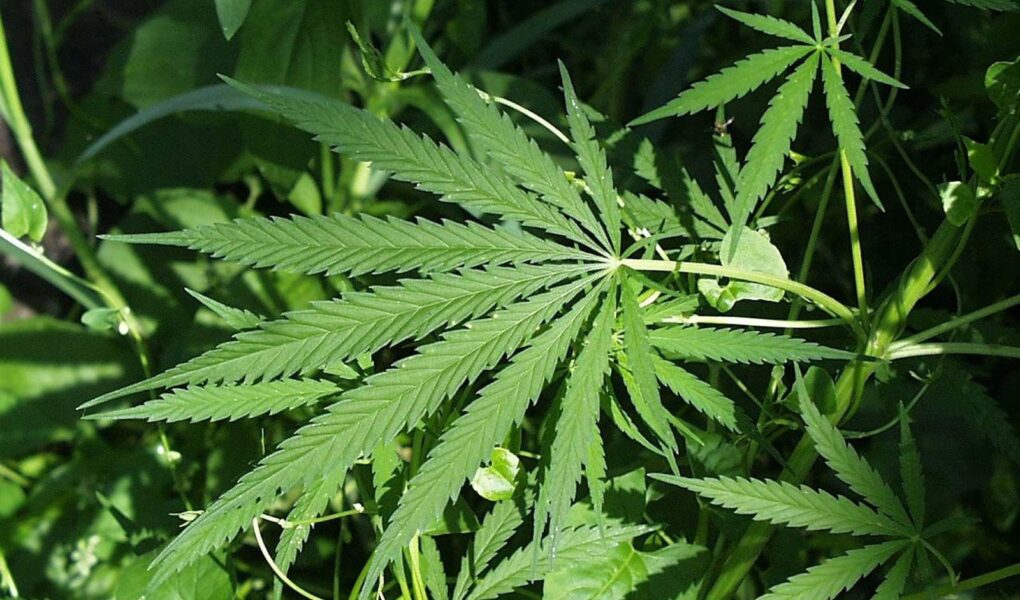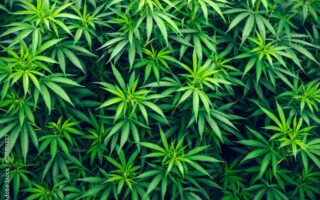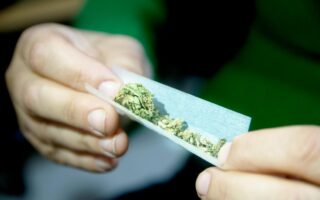The hemp plant, often overshadowed by its more infamous cousin, cannabis, possesses a remarkable versatility that has captured the attention of innovators, artisans, and environmentalists alike. For centuries, humanity has harnessed its fibers, seeds, and oils for a myriad of applications. From textiles and building materials to nutrition and sustainable practices, hemp’s potential stretches far beyond the boundaries of traditional usage. In this exploration of hemp’s diverse applications, we will delve into its historical significance, ecological benefits, and emerging trends, illuminating the many ways this hardy plant is shaping industries and inspiring a greener future. Join us as we unravel the rich tapestry of hemp’s contributions to our world, challenging preconceptions and celebrating the remarkable adaptability of this ancient crop.
Table of Contents
- Exploring the Versatile Applications of Hemp in Sustainable Products
- Nutritional Benefits of Hemp Seeds and Their Role in a Healthy Diet
- Innovative Uses of Hemp Fiber in Fashion and Textiles
- Harnessing Hemp for Environmental Conservation and Green Building Solutions
- Q&A
- In Retrospect
Exploring the Versatile Applications of Hemp in Sustainable Products
The hemp plant’s remarkable adaptability has led to its integration into a variety of sustainable products, significantly contributing to eco-friendly practices. This ancient crop offers numerous applications that not only promote sustainability but also benefit various industries. From textiles to construction, hemp fibers are renowned for their strength and durability, making them a preferred choice for products such as:
- Eco-friendly fabrics: Hemp fabric is softer and more breathable than cotton, offering an organic alternative.
- Building materials: Hempcrete and insulation derived from hemp provide sustainable solutions for construction.
- Biocomposites: Hemp is increasingly used in automotive parts and packaging materials, reducing plastic reliance.
In addition to its material properties, hemp seeds and oil have gained popularity in the health and wellness arena. They are packed with essential fatty acids, proteins, and a myriad of nutrients, thus being utilized in the food sector and cosmetics. The versatility of hemp extends to:
- Nutrition: Hemp seeds serve as a protein-rich addition to diets, suitable for various culinary creations.
- Skin care products: Hemp oil is known for its moisturizing and therapeutic properties, making it ideal for cosmetics.
- Biofuel: Hemp biomass can be converted into sustainable energy sources, paving the way for greener alternatives.
| Hemp Product | Benefit |
|---|---|
| Textiles | Durable, biodegradable, and sustainable |
| Insulation | Energy-efficient and eco-friendly |
| Food | Rich in nutrients, omega fatty acids |
Nutritional Benefits of Hemp Seeds and Their Role in a Healthy Diet
Hemp seeds are increasingly recognized as a powerhouse of nutrition, offering an impressive array of vitamins, minerals, and healthy fats. These small seeds are packed with essential fatty acids—particularly omega-3 and omega-6—which are crucial for maintaining heart health and supporting overall well-being. In addition to their healthy fat content, hemp seeds are a valuable source of protein, containing all nine essential amino acids, making them an excellent choice for vegetarians and vegans seeking to meet their protein needs. Furthermore, they are rich in minerals such as magnesium, phosphorus, and potassium, which play vital roles in bone health and muscle function.
Incorporating hemp seeds into your diet can provide numerous health advantages that enhance your overall nutrition. Here are some benefits of these tiny seeds:
- Antioxidant Properties: Rich in antioxidants that help combat oxidative stress.
- Improved Digestion: Contains fiber that supports digestive health.
- Skin Health: Provides essential fats that can help maintain healthy skin.
| Nutrient | Amount per 30g (approx. 3 tbsp) |
|---|---|
| Protein | 10g |
| Fat | 15g |
| Fiber | 1g |
| Vitamin E | 0.6mg |
| Iron | 2.4mg |
Innovative Uses of Hemp Fiber in Fashion and Textiles
Hemp fiber has emerged as a versatile material in the fashion and textile industries, celebrated for its durability, sustainability, and unique aesthetic appeal. Designers are increasingly drawn to hemp for creating a range of eco-friendly products. From clothing to accessories, the innovation doesn’t stop there. Some popular uses include:
- Apparel: Fashion brands are crafting everything from shirts to jackets using blended hemp materials, often combining it seamlessly with organic cotton.
- Footwear: Innovative footwear designers are incorporating hemp into sustainable shoe collections, providing breathable and strong alternatives to traditional materials.
- Underwear: The softness and breathability of hemp make it an excellent choice for comfortable, all-natural undergarments.
Moreover, the aesthetic qualities of hemp provide a rustic yet modern touch, appealing to eco-conscious consumers seeking sustainable options without compromising style. Noteworthy applications also include:
- Home textiles: Hemp is being utilized for curtains, table linens, and upholstery, featuring both beautiful textures and long-lasting wear.
- Outdoor gear: Its remarkable strength makes hemp ideal for durable backpacks and camping equipment, pushing the boundaries of outdoor fashion.
- Dyed fabrics: Designers are experimenting with natural dyes on hemp fabric, producing vibrant colors while maintaining a minimal environmental impact.
Harnessing Hemp for Environmental Conservation and Green Building Solutions
Hemp, often lauded for its versatility, emerges as a powerful ally in the fight against environmental degradation. Its rapid growth cycle and minimal need for pesticides make it an ideal crop for sustainable agriculture. By absorbing large quantities of carbon dioxide, hemp fields serve as carbon sinks, showcasing a natural solution to combat climate change. Additionally, hemp’s deep root system prevents soil erosion, enhancing land stability, which is crucial for maintaining healthy ecosystems. This plant not only aids in soil health but also promotes biodiversity, creating environments where various plant and animal species can thrive.
In the realm of green building solutions, hemp offers a canvas rich with potential. Hempcrete, a composite material made from hemp fibers and lime, is gaining traction as an eco-friendly alternative to traditional building materials. This lightweight yet durable substance provides excellent thermal insulation while being completely biodegradable. The unique properties of hemp allow for the creation of structures that are both energy-efficient and environmentally friendly. Other applications include hemp-based insulation, which boasts enhanced thermal performance, and the use of hemp fibers in composite materials, contributing to strong, sustainable construction practices.
| Hemp Benefits for the Environment | Ecosystem Contributions |
|---|---|
| Carbon Sequestration | Reducing greenhouse gases |
| Soil Erosion Prevention | Maintaining land stability |
| Promotes Biodiversity | Supports various species |
| Minimal Resource Requirements | Low pesticide and water usage |
Q&A
Q&A on Hemp Plant Uses
Q1: What exactly is hemp, and how does it differ from cannabis?
A1: Hemp is a variety of the Cannabis sativa plant species. While both hemp and cannabis contain cannabinoids, hemp is specifically bred to have low levels (less than 0.3% THC) of the psychoactive compound tetrahydrocannabinol (THC). This makes hemp a non-intoxicating plant, primarily used for industrial purposes rather than recreational.
Q2: What are the primary uses of hemp in the textile industry?
A2: Hemp boasts remarkable strength and durability, making it an ideal candidate for textiles. It can be spun into various fabric types, from coarse canvas to soft and breathable garments. Beyond clothing, hemp fibers are used in ropes, eco-friendly textiles, and even in upholstery, offering sustainable alternatives to conventional materials.
Q3: How is hemp utilized in the construction industry?
A3: Hemp is revolutionizing construction with its versatile applications. Hempcrete, a biocomposite made from hemp hurds (the woody core of the plant) and lime, is gaining popularity for its insulation properties and carbon footprint reduction. Hemp fibers can also reinforce concrete and be turned into panels for building, promoting energy-efficient and sustainable construction practices.
Q4: Can you discuss the nutritional benefits of hemp seeds?
A4: Absolutely! Hemp seeds are a powerhouse of nutrition. They are rich in essential fatty acids, particularly omega-3 and omega-6, making them an excellent addition to a balanced diet. Additionally, they are packed with high-quality protein, vitamins, and minerals, contributing to heart health, skin vitality, and overall wellness. Hemp seeds can be added to smoothies, salads, or baked goods for an extra nutritional boost.
Q5: In what ways is hemp contributing to the cosmetic industry?
A5: Hemp oil, extracted from hemp seeds, has become a popular ingredient in cosmetics due to its moisturising and anti-inflammatory properties. It helps improve skin hydration and elasticity, making it ideal for lotions, creams, and soaps. Additionally, its antioxidant properties can soothe irritation and support healthy skin, combining wellness with beauty.
Q6: What role does hemp play in sustainable practices?
A6: Hemp is often dubbed a “super plant” for its sustainability. It grows quickly and is capable of thriving in marginal soils. The crop requires fewer pesticides and herbicides than many traditional agricultural products, making it an environmentally friendly option. Furthermore, hemp absorbs more CO2 during its growth cycle than many trees, contributing to a reduction in greenhouse gases.
Q7: Are there any future possibilities for hemp that we should watch for?
A7: Indeed, the future of hemp appears promising! As research continues, we may see advances in biodegradable plastics derived from hemp, innovations in biofuels, and further exploration into its medicinal properties, particularly the therapeutic potential of cannabinoids other than THC. The shift towards a sustainable economy has placed hemp on the forefront as a versatile solution to pressing environmental challenges.
Q8: How can individuals get involved in the hemp movement?
A8: Individuals can support the hemp movement in various ways. Start by educating yourself and others about hemp’s benefits. Consider purchasing hemp products, whether they are textiles, food items, or personal care products, from local or sustainable sources. Advocating for lenient regulations surrounding hemp cultivation and supporting organizations that promote hemp farming can also make a significant impact on this burgeoning industry.
This Q&A format serves as a versatile guide, providing readers with a thorough understanding of hemp and its multifaceted uses while encouraging further exploration of this remarkable plant.
In Retrospect
As we draw the curtain on our exploration of the multifaceted hemp plant, it becomes clear that its applications are as diverse as the plant itself. From sustainable construction materials that promise to reshape our built environment, to textiles that offer an eco-friendly alternative to conventional fabrics, the potential of hemp is both profound and practical. Moreover, its contributions extend into the realms of health and wellness, providing natural solutions that resonate with an increasingly mindful global population.
Whether you’re an environmental advocate, a wellness enthusiast, or simply curious about the possibilities inherent in this resilient plant, the journey of hemp has only just begun. As research continues to unfold and innovations emerge, we stand on the brink of a more sustainable and health-conscious future, where hemp plays a pivotal role. Let us carry this knowledge forward, nurturing a greater understanding and appreciation for a plant that has been a companion to humanity for centuries. The promise of hemp is not just in its uses but in the collective action we can take to incorporate it into our lives for a more sustainable tomorrow.



